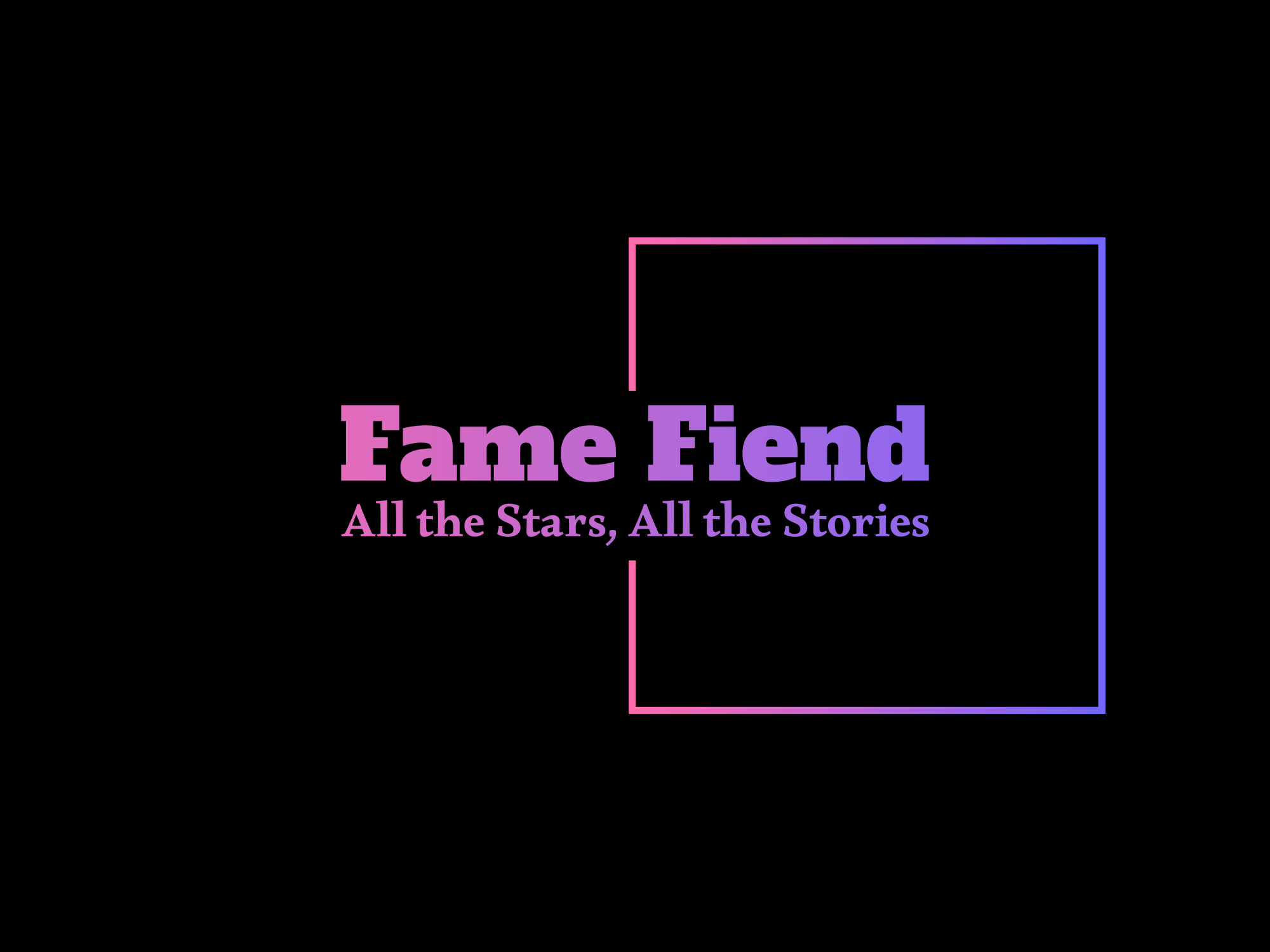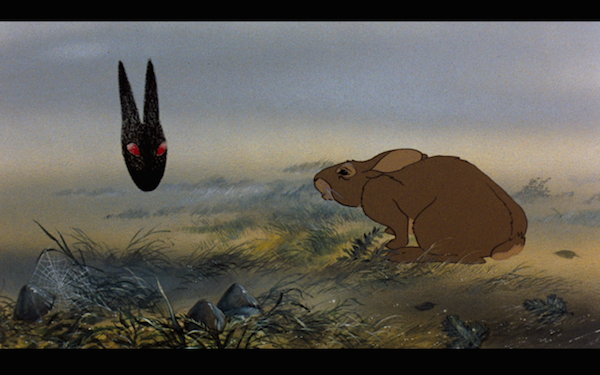“Watership Down,” Martin Rosen’s 1978 adaptation of Richard Adams’ novel about rabbits traveling the English countryside to find a new homeland after their warren is marked for destruction, has been a constant in my life since I first saw it as a child. And it has become an increased source of comfort as I’ve grown older. Recently my wife Judith, who admires the film as much as I do, has taken to calling it up on the Max platform at night as visual comfort food while going to sleep. I usually watch the entire thing, which means I’ve now seen “Watership Down” about as many times as I’ve seen any of my favorite movies.
I even have a tattoo referencing “Watership Down” on the inside of my forearm. I got it after my first wife, Jennifer, died unexpectedly of a previously undiagnosed heart condition, about 27 years after seeing the movie for the first time. The tattoo is of the Black Rabbit of Inlé, the grim reaper of the rabbits, who takes rabbits to the Shadow Realm when it’s their time to depart the material plane. (Roger Ebert.com contributor Charlie Brigden contributed an essay about the Mike Batt song “Bright Eyes,” performed by Art Garfunkel in one of the film’s most beautiful and disturbing montages, to the deluxe BFI box set—and by incredible coincidence, he has the exact same tattoo as me, in the same spot. Hi, Charlie!)
This obsession might seem odd to those who were put off by the film’s bloody violence and frank depictions of cruelty and oppression, not to mention its frank fascination with death, which is an ever-present threat even when the rabbits are contented. There’s a cognitive dissonance baked into the project: it has an adorable, almost 1970s-era Disney-esque look, but deals in material Disney would never have gone near (and still wouldn’t). “Watership Down” was an object of controversy for decades in the United Kingdom because the national ratings board designated it “U,” as in universally appropriate for all ages. It encountered classification problems in other countries as well, for the same reasons. It’s worth noting that in the late 1970s, Japanese animation that had an edge and dealt with complex themes and disturbing subject matter hadn’t made inroads in the West yet, and the only major animator making films exclusively for adults was Ralph Bakshi, so animation was still mostly thought of as kid stuff.)
In a 40th anniversary interview with The Independent, Rosen said, “I remember talking to the censors in Sweden and saying, ‘Is there something about death you don’t want children to know about? It’s going to happen to us all.’ That sold the position and it was released to general distribution in Sweden.”
That, as much as anything, explains why I was so struck by the movie in my youth, and why I’ve commemorated it on my skin with permanent ink. You think about death as you get older and lose more and more people that you love, and face different kinds of hardships, some of them completely unexpected. The reality of your limited time on earth really starts to hit home when people roughly your own age or slightly older begin to die off. If you’re a young person reading this who can’t relate, well, get ready: it will happen to you too, in time.
The two main characters of “Watership Down” are Hazel, who’s a smart, tough, loyal rabbit, and his friend Fiver (voiced by John Hurt), a “runt” who has psychic visions and whose premonitions of a sort of rabbit genocide prompts some of the warren to flee their present location (which is scheduled to be torn up as part of a construction project) for the title landmark, a lush green green hill. Blood and death enter the picture immediately. The movie begins with a somewhat abstract animated sequence (at least compared to the rest of the movie) showing how the god Frith, aka the sun, punished El-ahrairha, the first rabbit on earth, for the sin of arrogance, differentiating animals that had once lived in harmony by making some of them predators and giving rabbits a bushy tail to make them easier to spot, but also powerful legs to run away on. The rampage of the predators is marked by bloody rabbit corpses that look like black cutouts with splashes of red; the image will recur in the final sequence, when a large predator makes work of several rabbits and scatters their corpses.
The rest of the movie is punctuated by images that are shocking for their blunt (though not exploitive) representations of violence and death. A rabbit gets caught in a snare around his neck, coughs up blood as the life is choked out of him, and is barely rescued by his compatriots. (Rosen insisted that a silhouetted version of this moment be the dominant image on the poster, to let everyone know that this wasn’t harmless Disney fare like “The Rescuers” or “The Fox and the Hound.”) A despotic rabbit known as General Woundwort, kind of a long-eared fascist, tries to annex part of the warren’s population for his militaristic society, which punishes dissidents and rebels by shredding the tops of their ears.
Pretty early in the story there’s a moment where the rabbits are traveling and one of them gets snatched up by a hawk so quickly that it’s as if it has simply disappeared, at the push of a button. The only evidence that anything happened is a single feather slowly drifting to earth.
It all sounds pretty dire, yes. But Watership Down” is quite a lovely film to look at and listen to, with watercolor backgrounds in which you can see actual brush strokes by painters, and a woodwind- and percussion-focused score written by Angela Morely, who did John Williams’ orchestrations for the first “Star Wars” soundtrack. What’s most moving about it, to me anyway, is the way intimations of death’s certainty are woven into the narrative, in recurring but varied ways that get the audience used to the idea that life on earth is brief and precious. Frith the sun gives life and the Black Rabbit takes it away.
I hope I go like the rabbit in the movie who is quietly enjoying a bit of grass in his old age while, in the background, a group of rabbit children hear the story that we’ve just watched unfold. The Black Rabbit floats out of the ether and tells him its his time, and he lies down peacefully and goes to sleep and then his spirit rises up out of his still form and floats off to the Shadow Realm.
Every once in awhile, somebody asks me how I’d prefer to die, and I give an answer that sounds like a joke but isn’t meant to be: “Either selflessly saving another person’s life, or else quietly at a very advanced age, in my sleep.” This movie has both kinds of death in it, and others; between them, there’s incredible vitality and beauty. Maybe some kids are too young for it, but I don’t think so. It makes you feel and think and ask questions, which is what art should do.

